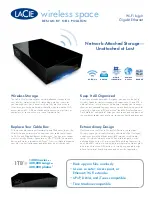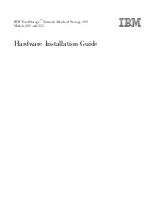
B&B Electronics, Inc.
SPECTRE Configuration Manual
37
710-10001-02 Rev. 3.0
www.bb-elec.com
www.bb-europe.com
1.13. NAT configuration
NAT (Network address Translation / Port address Translation - PAT) is a method of
sharing a single external IP address among many internal hosts. It also helps prevent
unauthorized access to the internal network. To enter the Network Address Translation
configuration, select the
NAT
menu item. Up to sixteen NAT rules may be defined.
Item
Description
Public Port
Public port
Private Port
Private port
Type
Protocol selection
Server IP address
IP address which will be forwarded incoming data.
Table 23: NAT configuration
If you need to setup more than 16 NAT rules, insert the following statement into the
startup script:
iptables -t nat -A napt -p tcp --dport [PORT_PUBLIC] -j DNAT --to-destination
[IPADDR]:[PORT1_PRIVATE]
The IP address parameter [IPADDR] and port parameters [PORT_PUBLIC]
and [PORT1_PRIVATE] must be filled in with the desired information.
The following option can be used to route all incoming traffic from the PPP to a single
internal host address.
Item
Description
Send all incoming packets
to default server
Select this item to route all traffic received over the PPP
connection to a single IP address on the internal network.
Default Server
Send all incoming packets to this IP address.
Table 24: Configuration of send all incoming packets
You can also specify which ports to use for access to the router using common protocols.
In most cases, the default port for each protocol should not be changed.
Item
Description
Enable remote HTTP
access on port
Select this option to allow access to the router using HTTP.
Enable remote
HTTPS access on
port
Select this option to allow access to the router using HTTPS.
Enable remote FTP
access on port
Select this option to allow access to the router using
FTP
.
Enable remote SSH
access on port
Select this option to allow access to the router using SSH.
Enable remote Telnet
access on port
Select this option to allow access to the router using Telnet.
Enable remote SNMP
access on port
Select this option to allow access to the router using SNMP.
Masquerade outgoing
packets
Select this option to turn on NAT.
Table 25: Remote access configuration
















































